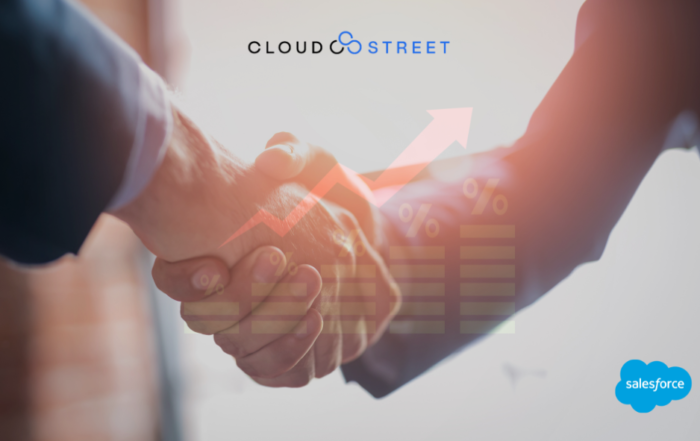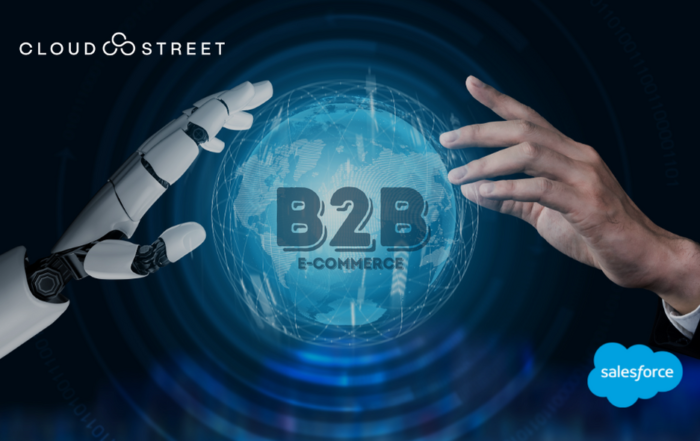
In Business-to-Business (B2B) sales and customer relationship management, Salesforce is a cornerstone for organizations seeking to elevate their operational efficacy and enhance client interactions. The seamless utilization of this formidable platform necessitates a profound focus on user experience optimization. This article will delve into a compendium of seven invaluable tips to empower B2B enterprises to optimize the Salesforce user experience. When adeptly applied, these strategies can augment productivity, streamline operations, and cultivate enduring client relationships.
1. Customizing Salesforce to Your Business Needs
Customizing Salesforce to align with your business’s unique needs is paramount for optimizing its functionality. By tailoring layouts, fields, and workflows, you ensure that Salesforce becomes an integrated part of your operations. Customization fosters efficiency, enhances user adoption, and provides a more intuitive experience, allowing your team to leverage Salesforce’s full potential in driving B2B success.
The Importance of Customization
Alignment with Business Processes: Every business has its processes and workflows. By customizing Salesforce, you can ensure the platform aligns seamlessly with your organization’s operations. This results in improved efficiency and productivity.
Enhanced User Adoption: Customization makes Salesforce more user-friendly. When your team finds the platform tailored to their needs, they are more likely to embrace it. This boosts user adoption rates and leads to better utilization of Salesforce’s capabilities.
Accurate Data and Reporting: Custom fields, validation rules, and data entry requirements can be configured to match your data quality standards. This ensures that the data within Salesforce remains accurate and reliable, essential for informed decision-making.
2. Investing in User Training and Onboarding
Investing in comprehensive user training and onboarding for Salesforce is essential to optimizing your B2B sales processes. Salesforce’s power and potential can only be fully realized when your team is well-versed in its capabilities. Training boosts user confidence, increases efficiency, and fosters a deeper understanding of the platform, ultimately leading to improved user adoption and a more streamlined Salesforce user experience.
The Importance of User Training and Onboarding
Efficiency and Productivity: Well-trained users are more efficient in navigating Salesforce, performing tasks, and utilizing its features. This translates to increased productivity and faster response times in serving customers and closing deals.
Maximized Platform Utilization: Salesforce is a feature-rich platform with many tools and functionalities. Without proper training, users may not be aware of or know how to use these features to their advantage. Effective training ensures you make the most of your Salesforce investment.
User Confidence: Adequate training boosts user confidence. When your team understands how to use Salesforce effectively, they are more likely to embrace it, reducing resistance to change and increasing user satisfaction.
3. Leverage Automation and Integration
Leveraging automation and integration in your Salesforce processes is a strategic move to optimize your B2B sales operations. Automation streamlines repetitive tasks, while integration connects Salesforce with other tools in your tech stack, creating a unified ecosystem. This increases efficiency, data accuracy, and a seamless user experience. By embracing automation and integration, your organization can maximize the value of Salesforce in achieving its sales goals.
The Importance of Automation and Integration
Efficiency and Time Savings: Automation eliminates manual, time-consuming tasks by allowing Salesforce to handle them automatically. This frees up your team to focus on more strategic and value-added activities.
Consistency and Accuracy: Automated processes are consistent and less prone to errors than manual tasks. This ensures that data is accurate, which is essential for informed decision-making.
Improved Customer Experience: Automation enables you to provide a seamless and responsive customer experience. From lead nurturing to post-sale support, automation ensures that your customers receive timely and relevant communications.
Data Centralization: Integration connects Salesforce with other systems and tools in your tech stack, allowing data to flow seamlessly between them. This centralizes data, providing a unified view of customer interactions and insights.
4. Prioritize Data Quality and Cleanup
Accurate and reliable data is critical for decision-making, lead nurturing, and maintaining strong customer relationships. Prioritizing data quality and regularly conducting data cleanup in Salesforce is essential for optimizing the user experience. In this section, we will delve into the significance of data quality and cleanup and provide practical tips to ensure your Salesforce instance remains a reliable source of information.
The Importance of Data Quality and Cleanup
Informed Decision-Making: High-quality data ensures that your team makes informed decisions. Accurate information about leads, opportunities, and customer interactions is essential for strategy development and forecasting.
Effective Communication: Clean data means you can confidently reach prospects and customers. Incorrect or outdated contact information can result in wasted time and resources and damage your brand’s reputation.
Enhanced Customer Relationships: Accurate data lets you personalize your customer interactions. It allows you to understand their needs, preferences, and history, which can lead to improved customer satisfaction and loyalty.
Efficient Marketing Campaigns: Clean data is crucial for targeted marketing campaigns. It ensures that your marketing efforts are directed at the right audience, increasing the chances of conversion.
5. Creating Custom Reports and Dashboards
Creating custom reports and dashboards in Salesforce is pivotal for optimizing your B2B sales strategy. These tools empower you with real-time insights tailored to your business objectives. Customization ensures that your team can access, analyze, and visualize data relevant to their roles, resulting in data-driven decisions and enhanced productivity. Custom reports and dashboards are essential for a streamlined, efficient, and successful Salesforce user experience.
The Importance of Custom Reports and Dashboards
Real-time Insights: Custom reports and dashboards provide real-time visibility into your sales data and performance metrics. This enables your team to make data-driven decisions promptly.
Alignment with Business Goals: Tailored reports and dashboards can be designed to align with your specific business objectives and sales processes. This ensures you track and analyze the data most relevant to your goals.
Improved Productivity: Customized dashboards allow users to access the information they need quickly, reducing the time spent navigating through Salesforce and enhancing overall productivity.
Enhanced User Adoption: A well-designed dashboard with relevant data motivates users to engage with Salesforce regularly, increasing user adoption rates.
6. Monitoring User Feedback and Iterating
Monitoring user feedback and iterating based on their insights is a cornerstone of optimizing the Salesforce user experience in B2B settings. User feedback is a valuable source of information that can drive user-centric improvements, adapt Salesforce to evolving needs, and enhance user satisfaction. By actively listening to users, prioritizing their feedback, and iteratively refining the platform, organizations can ensure Salesforce remains a valuable asset that fosters success in B2B sales efforts.
The Importance of User Feedback
User-Centric Improvements: User feedback is a valuable source of information about what works well and what needs improvement within Salesforce. It helps you make user-centric enhancements that drive efficiency and satisfaction.
Adaptation to Changing Needs: Business requirements change over time. User feedback allows you to adapt Salesforce to evolving needs and emerging challenges in your B2B sales processes.
Increased Adoption: When users feel heard and see their suggestions implemented, they are more likely to embrace Salesforce and fully utilize its features. This, in turn, increases user adoption rates.
Identification of Pain Points: Users can identify pain points and bottlenecks that might not be apparent from an administrative perspective. Addressing these issues leads to smoother workflows and higher productivity.
7. Staying Updated with Salesforce Releases
Staying updated with Salesforce releases is a fundamental practice in B2B success. Salesforce frequently rolls out new features, improvements, and security updates that can greatly impact your business. You can ensure that your company makes the most of the platform’s features, upholds data security, and enhances user experience by staying updated about these developments. Maintaining current Salesforce versions is a continuous commitment to maximizing the platform’s B2B success capabilities.
The Importance of Staying Updated with Salesforce Releases
Access to New Features: Salesforce releases introduce innovative features and functionalities that can enhance your B2B sales processes. Staying updated ensures that your organization can take advantage of these valuable additions.
Security and Compliance: Salesforce releases often include important security updates and compliance improvements. Stay updated to ensure that your data remains secure and your organization complies with industry regulations.
Improved User Experience: Many releases enhance the user interface and user experience. This helps maintain user satisfaction and ensures that your team continues to find Salesforce intuitive and user-friendly.
Bug Fixes and Performance Enhancements: Staying updated with releases ensures you benefit from bug fixes and performance optimizations. This leads to a more stable and efficient Salesforce environment.
Conclusion
Optimizing the user experience in B2B Salesforce requires a multifaceted approach. Customization, training, automation, data quality, and feedback-driven improvements are essential. Staying informed about Salesforce releases is equally vital. By prioritizing these aspects, businesses can harness Salesforce’s full potential, streamline operations, and drive success in the competitive world of B2B sales.
Frequently Asked Questions about B2B Salesforce User Experience
1. What is the source of gaining B2B clients?
One can gain B2B clients by sending social media messages or personalized emails, contributing to quality conversations through online communities, social groups, or forums in an industry, posting valuable content on social media platforms like Twitter, or reaching out to the network.
2. What are the types of ecommerce business models?
There are six major ecommerce business models: Business to Consumer (B2C), Business to Government (B2G), Business to Business (B2B), Business to Business to Consumer (B2B2C), Consumer to Business (C2B), and Consumer to Consumer (C2C).
3. What are the 7 Ps of B2B marketing?
The 7 Ps of Business to Business (B2B) marketing are Product, Price, Place, Promotion, People, Process, and Physical evidence. The product refers to goods or services, the price must be competitive and profitable, the place must be a physical or online store, and the promotion must be for communications strategies. The people refer to employees, customers, and stakeholders; the process involves procedures and steps, and physical evidence refers to tangible aspects of the product.
4. What are the four pillars of Business to Business (B2B) marketing?
The four pillars are the 4Cs of B2B marketing. These are content, connection, communications, and conversion.
5. What are the methods to measure customer satisfaction among B2B companies?
The B2B companies rely on three ways to measure customer satisfaction. These are customer satisfaction surveys, Customer Effort Score or CES and Net Promoter Score or NPS.


